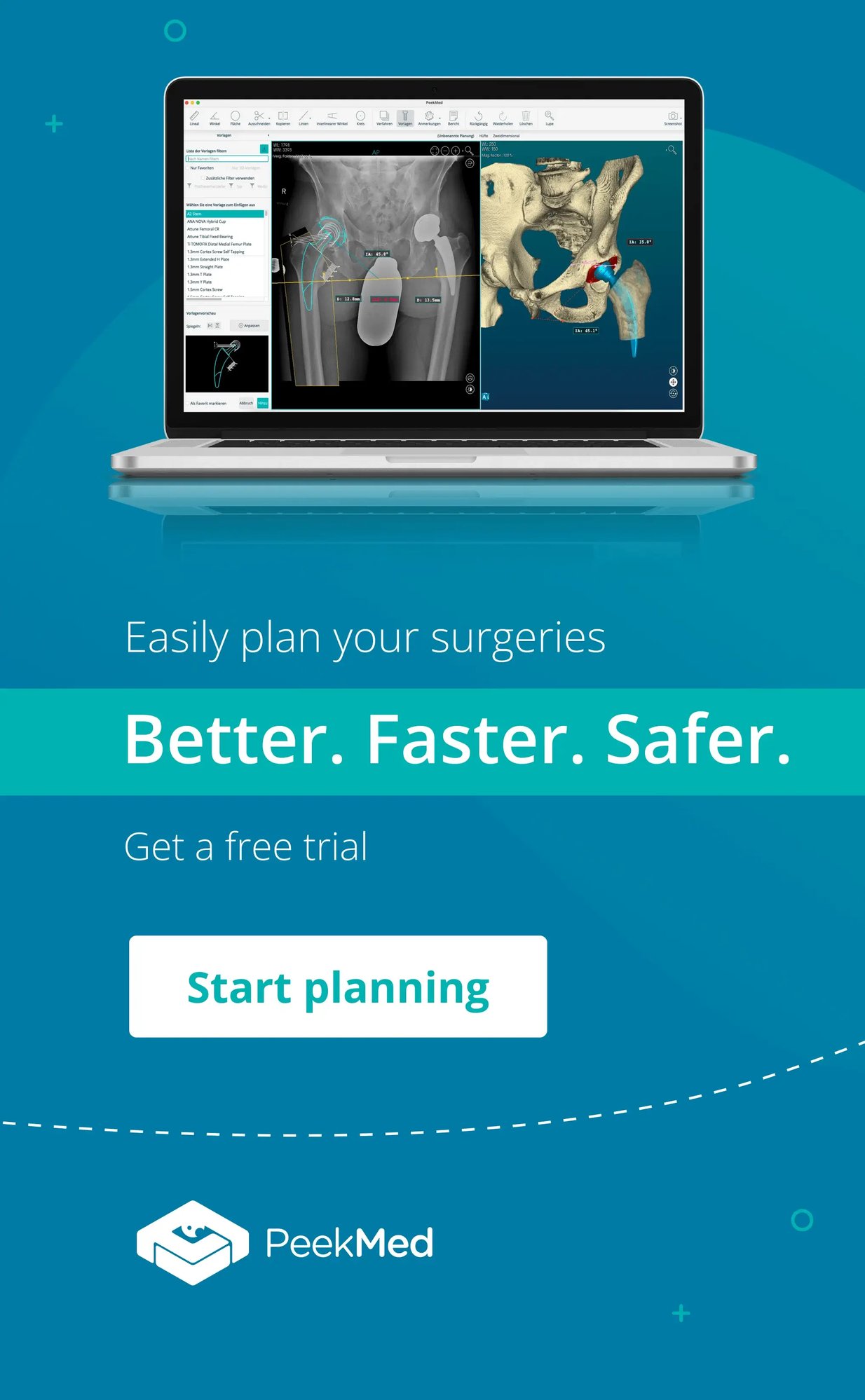PeekMed
Orthopedic Templating is a crucial element in orthopedic surgery, enabling precise planning to ensure successful patient outcomes. This technique allows surgeons to meticulously map out implant placements before entering the operating room. It is essential for optimal surgical accuracy.
What exactly is orthopedic templating, and how does automatic differ from traditional manual methods? Let's explore the details of this technology and the pros vs cons of templating.
Understanding Automatic Orthopedic Templating
Orthopedic surgery templating is the foundation of surgical planning, providing a roadmap for the procedure ahead.
Manual templating, the traditional approach, involves precise measurements and sketches made by hand to outline the surgical strategy. However, the manual template is time-consuming and susceptible to human error.
In contrast, automatic templating uses the power of advanced software algorithms to analyze medical imaging data, such as X-rays and MRIs. This technology generates precise digital representations of the patient's anatomy, allowing for more accurate and efficient automatic template positioning.
Many orthopedic procedures can benefit from the accuracy of automatic templating. In Total Hip Arthroplasty, for example, automatic templating simplifies the process by allowing surgeons to plan the implant placement, size, and inclination, and perform automatically necessary resections, like cutting and moving the fragment, and insertion.
It is important to note that, before delving into templating, you must meticulously perform image calibration and adjust image magnification settings to ensure that the templating process is conducted with precision and reliability.
Advantages of Automatic Orthopedic Templating
Automating the templating process offers you a multitude of benefits, including:
-
Accuracy: Automatic templating decreases substantially the margin of error associated with manual measurements, ensuring a higher degree of precision in surgical planning.
-
Efficiency: Orthopedic templating techniques can save valuable time in the pre-operative phase, allowing for smoother workflow and potentially shorter surgical durations.
-
Customization: Every patient is unique, and automatic templating allows you to tailor surgical plans to individual anatomies and pathologies. With customizable orthopedic templates, you can account for variations in bone morphology, joint alignment, and soft tissue balance, optimizing surgical outcomes.
-
Visualization: Surgeons can manipulate 3D models of the patient's anatomy, simulate implant placement, and assess surgical risks in a virtual environment. This empowers you to make informed decisions and anticipate challenges before entering the operating room.
Disadvantages of Automatic OrthopedicTemplating
Although orthopedic templating software offers numerous advantages, it also presents certain challenges and considerations that you must consider, such as:
-
Learning Curve: Adopting new technology may require training and familiarization, particularly for surgeons accustomed to traditional manual methods.
-
Dependency on Imaging Quality: The accuracy of digital templating relies heavily on the quality of the medical imaging data. Poor-quality images may lead to inaccurate templating results.
Implants and Templating: A Synergistic Relationship
The selection of orthopedic implants is critical to surgical success, and automatic templating plays a crucial role in this process.
Automatic templating software integrates implant libraries from various orthopedic implant manufacturers, allowing you to evaluate implant designs, sizes, and positions within the patient's anatomy.
This way, you don’t have to remember every implant manufacturer and size from memory since artificial intelligence will be able to suggest which is the most indicated implant for each procedure.
Automatic templating enables you to assess all factors and make informed decisions that optimize implant sizing and implant position, reducing the risk of post-surgery complications and improving patient satisfaction.
Embracing Surgical Efficiency with Automatic Orthopedic Templating
In the fast-paced world of orthopedic surgery, efficiency is essential to optimize patient outcomes and resource utilization. Automatic templating streamlines the pre-operative planning process, allowing you to generate digital templates quickly, assess surgical options, and communicate treatment plans with colleagues and patients.
By embracing automatic templating, you can enhance surgical efficiency, reduce operative times, and improve patient satisfaction.
Moreover, the digital nature of automatic templating facilitates data integration, enabling you to track outcomes, analyze trends, and refine surgical techniques over time.



